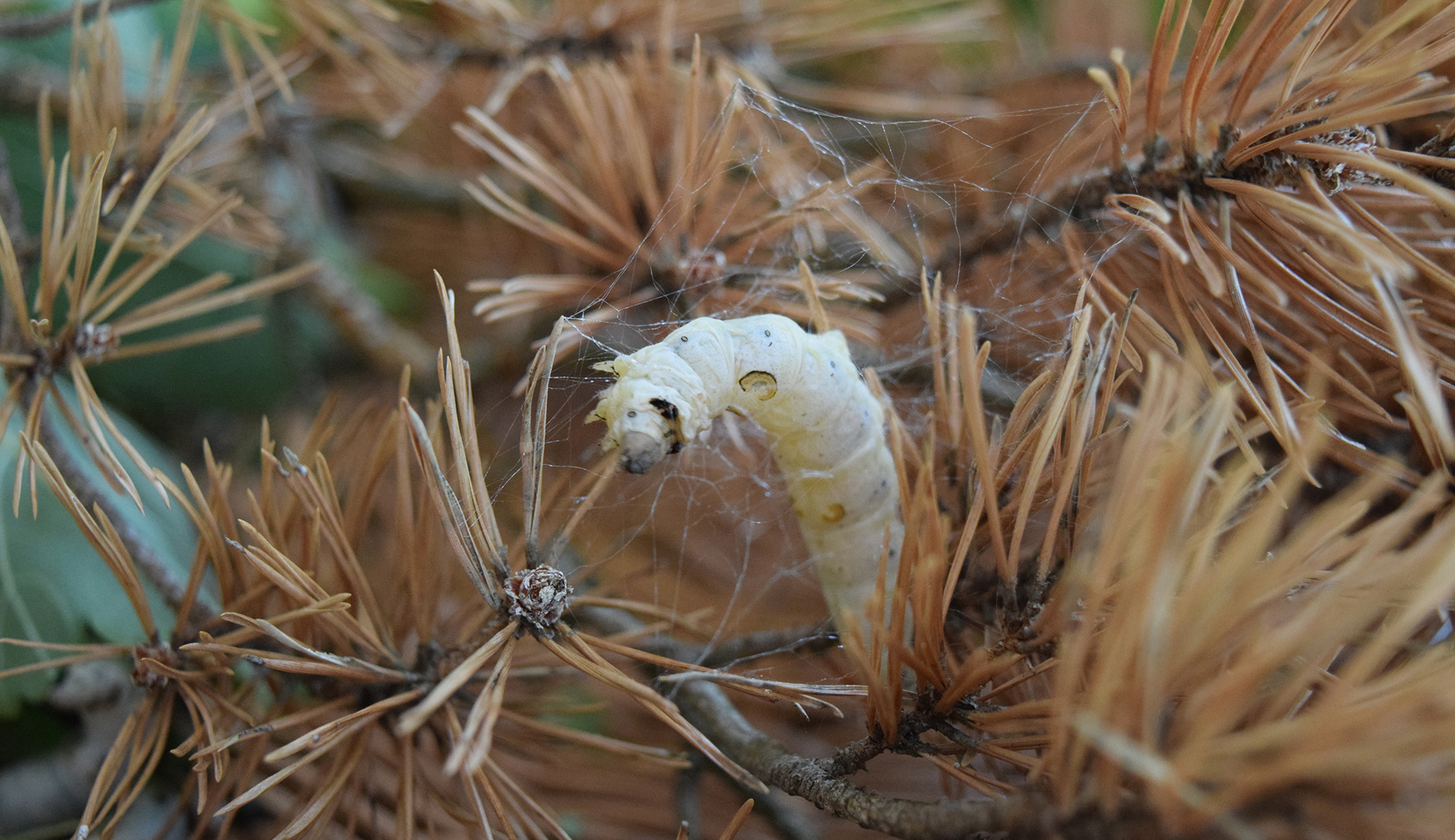Morus: Silk Symposium


Välkommen till två dagars program med presentationer och workshops om silke och småskalig uppfödning av silkeslarver i hemmet – med konstnärer och forskare som undersöker relationer mellan silkeslarver, mullbärsträd och människor. Programmet hålls på engelska.
Morus is an international silk community, practicing home-sericulture – meaning the breeding of silk worms in a small scale in one’s home – in order to engage local communities in historical processes regarding future silk production. The aim of the project is to raise awareness of the intertwined relationships between silkworms, mulberry trees and humans, as well as to ask questions about these relationships from artistic, social, ecological and ethical perspectives.
The first Morus Silk Symposium takes place in parallel to an exhibition in Super Ö, where artworks and research by seven members of the community is presented. The symposium program offers presentations, readings, workshops and film screenings.
The artists Hanna Norrna, Irini Gonou and Kleopatra Tsali are the founders of the Morus project, and responsible for the curation of the Silk Symposium in collaboration with the Röhsska museum.
Read more about the Morus project and the exhibition in Super Ö.
11:00-11:20 – Introduction to Morus project: Artists Hanna Norrna, Irini Gonou, and Kleopatra Tsali introduce the project Morus and the concept of home-sericulture, as the starting point for a two-day Silk Symposium in Super Ö.
11:20-11:50 – Presentation – A green silk thread tied to the bone: Departing from archival material of the Swedish silk initiatives in the 18th and 19th centuries, Hanna Norrna’s research presents the early presence of mulberry trees and traces of silk production on Gotland, with links to the parallel events of the Visby Witch trials in 1705-1707. Using home-sericulture, natural dyeing and weaving as her methods, Hanna Norrna tells a story of silken care labour and domestic work.
12:00-12:30 – Presentation – What the Tree Heard: In this presentation Kleopatra Tsali explores the silkworm’s metamorphosis as a metaphor for identities shaped in states of transition – personal, cultural and material. Through textiles, clay, and recorded voices, Tsali reflect on what it means to inhabit thresholds – between cultures, identities, and stages of life – and how acts of making can offer space for transformation and remembering.
12:30-13:00 – Presentation – The hand tool: From silk breeding at school, to research and work in the museum of an old spinning mill – the French artist Giulia Zanvit tells the story of her reconnection with the history of silk in the region of Cévennes in southern France.
14:00-14:30: – Presentation – Ritual cloths and talismanic threads: In her presentation, Irini Gonou invites dialogue on how art can create space for slowness, cyclical ways of knowing, inclusivity, and collaboration across species and cultures. Inspired by her grandmother’s silkworm farming in Greece and a mulberry tree in her garden, Gonou explores the deep connections between humans, silkworms, and nature. Through breeding, storytelling, and textile installation, she reflects on themes of home, care, and renewal. Her work invites a slow, inclusive, and meditative approach to art and coexistence.
14:30-15:00 – Presentation – Spinning Whorls: In this presentation, cultural heritage scholar Anna Karlström reflects on the spindle as a tool for spinning thread, taking the installation Spinning Whorls in the exhibition Morus as her point of departure. Spindle whorls have been used for thousands of years and remain in use today—valued more for function than age. In many traditions, they form part of a living cultural heritage where making and use transmit knowledge. This challenges dominant heritage views that prioritise preservation over practice, and museum display over ongoing use.
15:00-15:30 – Presentation – Threads of Life: Artist Maja Lund presents her work Threads of Life. The work is centered around the life of Danish princess Leonora Christina (1621–1698), who engaged in writing and silk cultivation during a period of imprisonment in Copenhagen. Materials and colors in the work serve as symbols to reference different stages of the silkworm metamorphosis and princess Leonora Christina’s life.
15:45-16:30 – Guided tour of the exhibition Morus with the participating artists: The exhibition Morus in Super-Ö presents artworks and research by seven members of the international silk community. The room is filled with stories from women in silk processes – industrial, private, ceremonial, mythological – in the past, today and for the future.
Hanna Norrna (SE) is a textile artist based in Gothenburg, with a Master in Craft with specialization in Textile Art from HDK-Valand.
Irini Gonou (GR) is an artist based on Naxos, educated at the Ecole Nationale Superieure des Beaux‐Arts and Ecole Nationale Superieure des Arts Decoratifs in Paris.
Kleopatra Tsali (GR) is an artist from Athens, educated at the Department of Visual and Applied Arts of the University of Western Macedonia, Jan Matejko School of Fine Arts in Krakow and Athens School of Fine Arts.
Giulia Zanvit (FR) is a multidisciplinary artist and graduate of ESBA – MO.CO in Montpellier, based in Générargues in the Cévennes.
Anna Karlström (SE) is a Senior lecturer in Cultural Heritage at Uppsala University, Campus Gotland.
Maja Lund (DK) is an artist based in Copenhagen, educated in textile design and crafts at the University College of Copenhagen and holds a Master’s degree in Ethnology from the University of Copenhagen.
Deborah Jeromin (DE) is a visual artist based in Leipzig and Crete. She studied media art at Hochschule für Grafik und Buchkunst Leipzig.
Book your spot via the button that reads ”BOKA”. The number of seats is limited. A booking confirmation must be shown upon attendance. The program is included in the museum admission ticket. Please remember to cancel your spot if you are unable to attend. Cancellations should be made via email to: bokningar.rohsska@kultur.goteborg.
Drop-in available subject to space.
The activity is in english.
Image: Hanna Norrna.